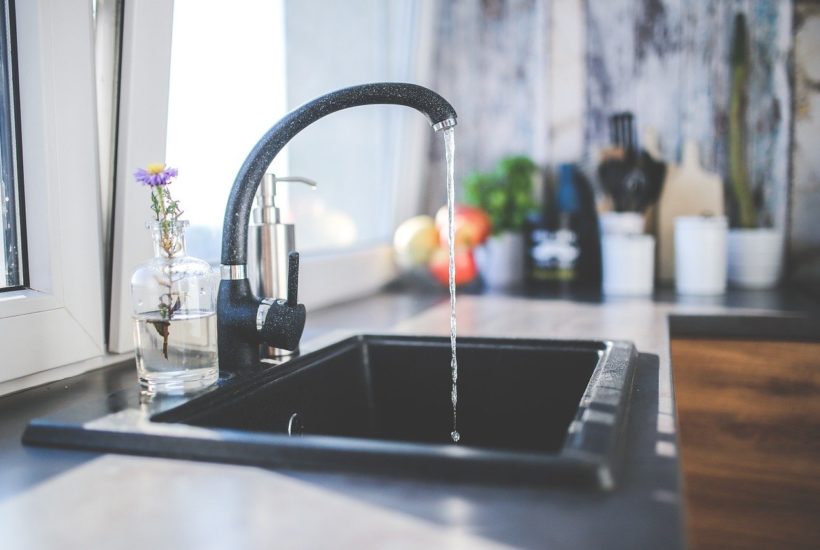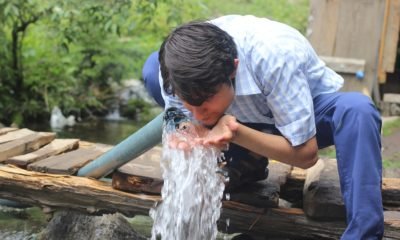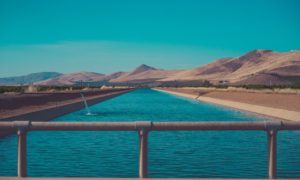Business
America is bordering on a water infrastructure crisis
The water purification problem is compounded even more because drinking water also is contaminated daily by industry, antiquated lead pipe delivery systems, and weakening government oversight. An estimated 105 million people receive water from public water systems that use groundwater, and one federal agency proclaims that an estimated 22 percent of public wells for those systems have one or more contaminants at unsafe levels for human health.

There is no disagreement — water is a precious asset. Without water, there is no path to survival or sustainability on the planet. Cities, counties, states, industries, trees, plants, crops, animals, and individuals cannot survive without adequate water resources. In America’s overall drive to sustainability, water is one of the most critical components. Yet, America’s water infrastructure is in significant disrepair. Because it has been ignored for so long, some warn that America is entirely too vulnerable.
Although the average American is using less water, population growth has increased demand and many regions are ill-prepared to meet projected increases in water needs. The amount of available water, however, is only one part of the country’s water infrastructure problem. A rarely discussed issue is the dangers related to water contamination.
America’s drinking water infrastructure consists of approximately 2.2 million miles of underground pipes that were designed decades ago to deliver clean and safe water to millions of people. Unfortunately, that type of delivery is no longer possible in some parts of the country. Very few citizens and taxpayers focus on that because there is little attention on reports that outline clean water infractions in their home regions. Government regulations require water testing and reporting, but too few Americans see the results of testing. Recently, the U.S. received a C- in the drinking-water category of the most recent report card from the American Society for Civil Engineers (ASCE) – 2021.
ASCE estimates approximately 240,000 water main breaks occur each year, creating a loss of more than 2 trillion gallons of treated drinking water annually. Additionally, a water main somewhere in the U.S. breaks every two minutes resulting in another 6 billion gallons of treated water lost every day across the nation. Finally, the Environmental Protection Agency (EPA) estimates that between 23,000 and 75,000 sanitary sewer overflow events occur each year. The sewer overflows create extremely costly and sometimes dangerous water issues.
The water purification problem is compounded even more because drinking water also is contaminated daily by industry, antiquated lead pipe delivery systems, and weakening government oversight.
Most citizens remember the shock and atrocity of the Flint, Michigan, water crisis of 2015, but few realize that during that same time water health standards were violated by other U.S. water systems serving more than 21 million people. In 2019, more than 30 million Americans lived in areas where water systems could not meet water safety standards.
An estimated 105 million people receive water from public water systems that use groundwater, and one federal agency proclaims that an estimated 22 percent of public wells for those systems have one or more contaminants at unsafe levels for human health. The most common contaminants include:
- Arsenic, which results in an increased risk of cancer.
- Chlorine byproducts, which also cause a cancer risk along with eye, skin, and respiratory irritation.
- Haloacetic acids (HAAs), which are identified as a potential cause of developmental defects, DNA damage, and cancer.
- Lead, which is highly toxic to almost every system in the body and can be especially dangerous to children.
- Mercury, which is a highly toxic chemical that can affect the nervous, digestive, immune, and respiratory systems.
These are but a few of the more common contaminants. And, to be even more specific, here are a few examples from government reports that list the most common contaminants found in water in certain states:
- Texas – chlorine byproducts, mercury, total trihalomethanes (TTHMs).
- California – nitrates, uranium.
- Florida – HAAs, nitrates, saltwater intrusion.
- Arizona – arsenic, lead.
- New Hampshire – chlorine byproducts, manganese, uranium.
- Massachusetts – chlorine byproducts, HAAs, TTHMs.
More examples from water reports include:
- Jim Hogg County, Texas — More than 5,000 people have been exposed to arsenic concentrations in their water in amounts more than four times the designated safe levels for a period of at least five years.
- San Joaquin Valley, California — The San Joaquin Valley has more than 1 million people who have been exposed to contaminated drinking water because of the 680 contaminated public water systems in the region. Of those, 506 are totally reliant on the contaminated groundwater. One of the contaminants in the San Joaquin Valley is nitrate.
- Uniontown, Alabama — As a result of a 2008 spill in Kingston, Tennessee, Uniontown was hit with more than 3 million cubic yards of coal ash. This is still an issue related to groundwater quality because of the metal concentration in coal ash.
So why point out all these negative examples? Only one reason — the U.S. is about to distribute billions of dollars to public officials at every level of government through the America Rescue Plan. More funding is likely to flow from an infrastructure bill in the next several months. Citizens and taxpayers should know how critically important it is that some amount of the funding be allocated to upgrade water infrastructure in the regions where they live.
How should the funding be used? Here are a few critical parts of the country’s water problems that cry out for attention. Regional leaders should find ways to increase water resources. Officials should replace lead contaminated pipes, refresh aquifers, and find funding to build more water treatment plants while upgrading older ones. Desalination plants should be considered while government leaders find new ways to transfer water and embrace new water technology. That will at least start the process of preparing for a safe and sustainable water future.
—
(Featured image by kaboompics via Pixabay)
DISCLAIMER: This article was written by a third party contributor and does not reflect the opinion of Born2Invest, its management, staff or its associates. Please review our disclaimer for more information.
This article may include forward-looking statements. These forward-looking statements generally are identified by the words “believe,” “project,” “estimate,” “become,” “plan,” “will,” and similar expressions. These forward-looking statements involve known and unknown risks as well as uncertainties, including those discussed in the following cautionary statements and elsewhere in this article and on this site. Although the Company may believe that its expectations are based on reasonable assumptions, the actual results that the Company may achieve may differ materially from any forward-looking statements, which reflect the opinions of the management of the Company only as of the date hereof. Additionally, please make sure to read these important disclosures.

-

 Impact Investing2 weeks ago
Impact Investing2 weeks agoEuropean Sustainability Week 2025: Advancing ESG Amid Uncertainty
-

 Crypto1 day ago
Crypto1 day agoHyperliquid Proposes Burning $1B in HYPE to Make Supply Deflationary
-

 Fintech1 week ago
Fintech1 week agoArgentina’s Banks Poised to Integrate Cryptocurrencies, Paving Way for Widespread Adoption
-

 Crypto4 days ago
Crypto4 days agoCrypto Markets Slide as Bitcoin Breaks $90K, Year-End Pessimism Grows






















